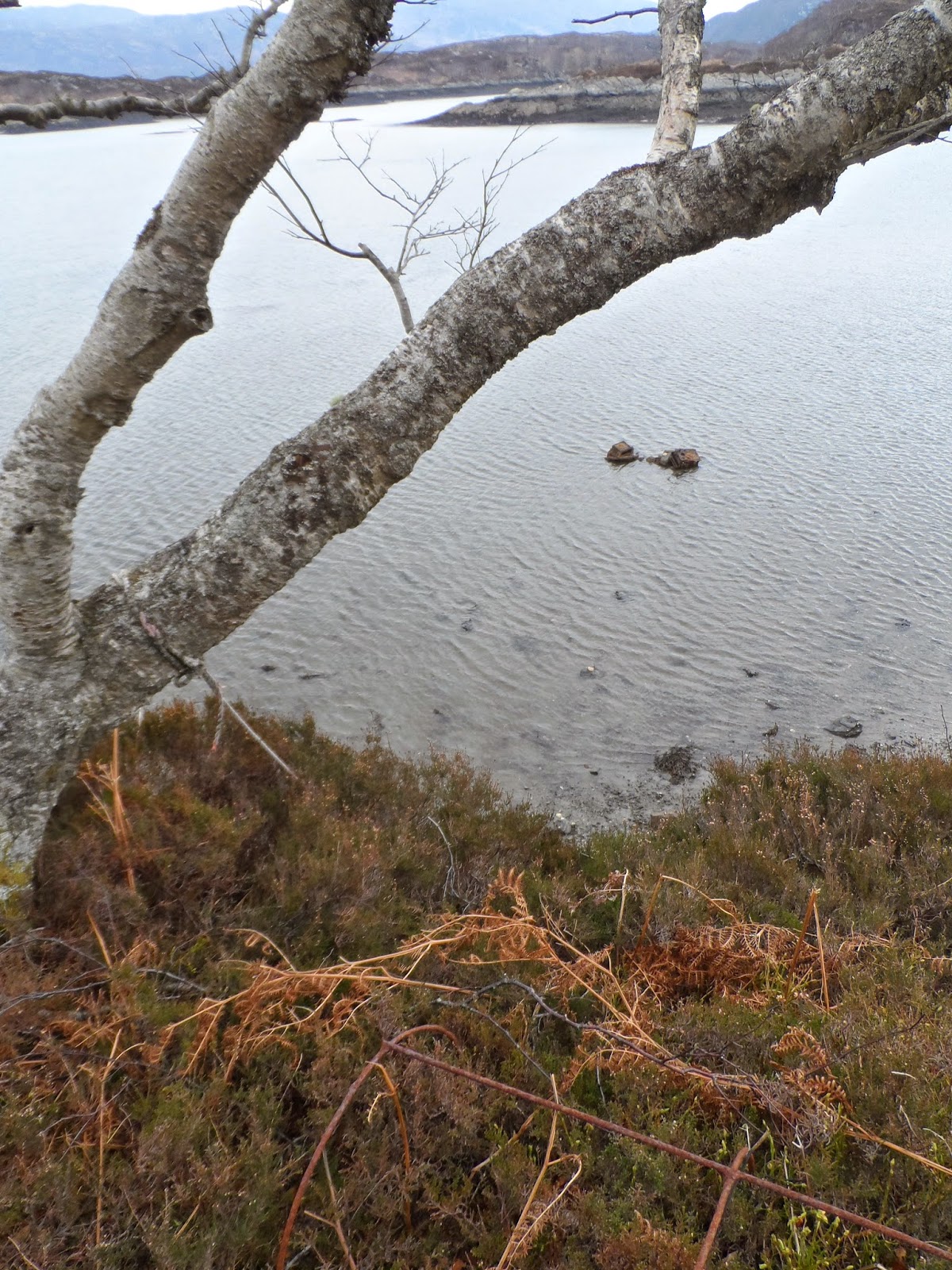Many years ago we had a mooring out at the end of the point which was a circle of rope (known as a running trot) attached to a tree on the shore and to an anchor about 15 metres out. This meant you could get out of the boat, attach it to the rope circle then pull it out to the anchor. The end of the point only ever dries out at very low tides and the mooring was next to a rock shelf which you could clamber out onto. The boats were kept safe from bashing against pontoons or rocks and could be used almost all the time.
The downside was that accessing the mooring involved walking to the end of the point and a bit of a scramble up and down the rocky ledge. We stopped using the mooring about 15 years ago when my mother decided that a pontoon should be set-up on the other side of the bay which she could more easily walk to. In practice she never did walk out to the new pontoon (it still involved a bit of scrambling over rocks) and the new pontoon dried out at every low tide so we were limited when we could use the boats. We now have two pontoons: one at road side which only floats at high tide and the metal one on the far side of the bay. These pontoons are badly secured, falling to bits and covered in projections which have fatally holed one of our boats. I now spend more of my time patching up the pontoons than I ever spend in an actual boat.
I proposed to C that we kept our boat out of the water this year and spend the time sorting out the pontoons (demolishing the roadside one, creating proper anchors and then moving the metal ones next to the road) and reinstating the old mooring. The fact that C responded to this suggestion by buying another boat is part of his general confusion.
Two weeks ago at a low, spring tide I traipsed out to the end of the point with chains, shackles and buoy to secure to the old but existing anchor in the fetid mud that makes up the bay. As I was lowering myself down onto the rocky ledge (about a 3 metre drop) the ancient rope that I was holding onto broke and I fell onto the rock (taking most of the impact on my left arm and leg and avoiding the further 4m drop onto the mud). I hit my head on the rock and although there wasn't any concussion there was an awful lot of blood. I limped back to the house along the shore feeling very pathetic and was cleaned and patched haphazardly by a shaken C (in 1999 C befriended a Yorkshireman who was travelling the coast by boat and who slipped, hit his head, and died on the shore as he was returning from the pub on Christmas Eve). I spent the rest of the day in bed (wanly greeting two bemused Czech volunteers who arrived for a week's working holiday that evening) and drove back to Glasgow the next day. I went along to A&E on the Sunday for a tetanus shot and reassurance that no great damage had been done.
Two weeks later and I've still got a slight limp (I tore a fair chunk out of my left heel and knee) and a dramatic scar on my forehead. I'm still a bit shaken but life goes on and C's increasingly manic ebullience still has to be controlled. I was back up at the cottage this week to transport the next volunteer (a Spanish water engineer who coped admirably with C's shouting) and to provide an impromptu dinner party for a Norwegian sailor and his crew of two. I'm back in Glasgow now, still recuperating and providing myself with comfort food in the form of a fresh summer pasta. C has taken to criticising, well, everything and he objected to me calling a dish 'risotto primavera' - he "hates" the name because 'primavera' just means 'Spring'. I pointed out that risotto is an Italian dish so giving it an Italian name* made sense but having his grumpiness contradicted, no matter how gently, just leads to sulks. Hey ho. By myself I'm free to call stuff whatever I like:
Pasta Primavera
(serves one)
5cm chopped chorizo
2 handfuls of skinned broad beans
2 cloves chooped garlic
3 chopped cherry tomatoes
pasta
while the pasta is cooking, saute the chorizo in a dash of oil and skin the broad beans (a bit of a faff but I reckon it's worth it) add the garlic and chopped cherry tomatoes then, just before serving, stir in the broad beans and cooked pasta. Heat through and serve.
* Pasta Primavera was created in the 1970s in New York but arguing about the relative authenticity of Italian cuisine vs Italian-American cuisine is fraught at the best of times let alone in a small kitchen on the west coast of Scotland with a demented elderly gentleman



